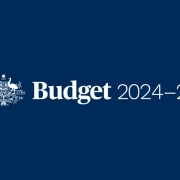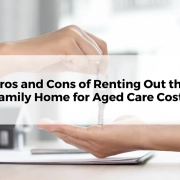3 Aged care industry facts you need to know
Table of Contents
ToggleMany individuals desire to maintain their independence during retirement and have the freedom to choose their living arrangements and lifestyle. However, the extent to which they can achieve this may be influenced by their health and physical condition. As we grow older, certain tasks may become more challenging to accomplish independently.
If you find that you’re becoming less capable of living on your own and require assistance with essential daily tasks like cooking, cleaning, and personal care, it might be necessary for you to consider transitioning to a residential aged care facility.
Tip: It’s important to understand the distinction between residential aged care and retirement villages. While retirement villages offer independent living arrangements and operate with distinct fee structures, residential aged care provides specialized care for older adults in need of support.
The daily aged care fees can reach up to $112,840 per year, but most of it is covered by the government. Your personal contribution, based on your financial situation as evaluated by Services Australia, would range from $19,239 to $47,578.
However, the primary worry for many individuals revolves around figuring out how to afford the substantial costs associated with reserving a room. These costs typically vary between $100,000 and $2 million, although they commonly fall within the range of $400,000 to $600,000. These payments, referred to as Refundable Accommodation Deposits (RADs), require a lump sum payment.
If you’re looking for financial guidance on how to handle payments and funding strategies, it can greatly reduce your stress. Let’s explore some important information regarding accommodation payments.

3 Aged Care Industry Facts
1. This is not lost money
One important fact to understand about Refundable Accommodation Deposits (RADs) is that they can be fully refunded to you when you depart from the care facility. However, this refundability is subject to the condition that you don’t authorize the service provider to deduct other fees from the deposit, which can be done to assist with your immediate cashflow.
When choosing an aged care provider, it’s crucial to ensure that repayment is backed by the Federal Government if it’s made to an approved provider. This guarantee adds an important layer of security for individuals.
2. You are not required to pay the lump sum
Accommodation payments are initially given as a single lump sum but are also converted into a Daily Accommodation Payment (DAP) of equal value. The conversion process uses Maximum Permissible Interest Rate (MPIR) of 8.34% (as of 1 April 2024).
For example: If you have a RAD (Refundable Accommodation Deposit) of $400,000, it can be converted to a DAP (Daily Accommodation Payment) of $91.40 per day.
When you decide to join a residential aged care facility, you have the option to select how you want to pay for it. You can choose to pay the full Refundable Accommodation Deposit (RAD), the full Daily Accommodation Payment (DAP), or a combination of both. It’s important to note that you are not required to make this decision until 28 days after you have moved into the aged care facility. Furthermore, the facility cannot force or influence you to choose any specific payment option.

3. Even if you have less assets compared to the indicated RAD, it might still be within your financial means.
If you lack sufficient assets to cover the RAD (Refundable Accommodation Deposit), the initial course of action is to determine if you are eligible for government concessions as a low-income individual. In order to qualify, your portion of assessable assets should be below $173,075.20.
If you are not eligible, you will have to figure out how to cover the entire accommodation payment requested by the service. If you don’t possess sufficient assets, paying a portion of the Refundable Accommodation Deposit (RAD) and the remaining amount as a Daily Accommodation Payment (DAP) might be an option, but only if you have extra cashflow to cover the DAP.
Another strategy option involves paying as much of the RAD (Refundable Accommodation Deposit) as you can comfortably afford. Then, you can instruct the service provider to deduct the DAP (Daily Accommodation Payment) from the remaining unpaid amount of the RAD you have already paid.
This choice allows you to use your income for daily care fees and living expenses, but it results in a lower refundable accommodation deposit (RAD) when you eventually leave. However, it can still assist you in covering the cost of the accommodation payment required to access the necessary aged care services.










